 Acadia National Park
Acadia National ParkMaine
Comprised of a cluster of islands on the rugged Maine coast, Acadia National Park has a variety of landscapes including granite-domed mountains, woodlands, lakes, ponds, and ocean shoreline.
Date Of First Visit: 2017 October👨👩
 Arches National Park
Arches National ParkUtah
Contains the greatest density of natural sandstone arches in the world. Throughout the park, rock layers reveal millions of years of deposition, erosion and other geologic events.
Date Of First Visit: 2012 June👨👩👧
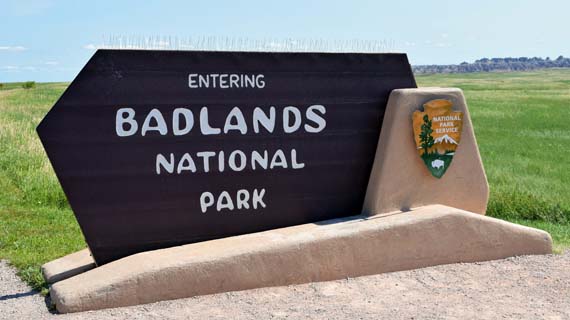 Badlands National Park
Badlands National ParkSouth Dakota
Consists of sharply eroded buttes, pinnacles and spires blended with the largest, protected mixed-grass prairie in the United States and one of the world's richest fossil beds.
Date Of First Visit: 2008 July👨👩👧👦
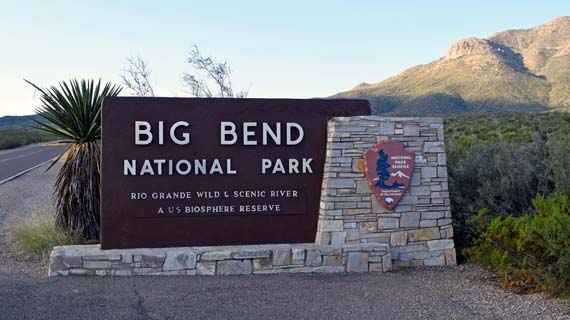 Big Bend National Park
Big Bend National ParkTexas
Named for the Bend of the Rio Grande along the US-Mexico border, this park includes a part of the Chihuahuan Desert and includes a wide variety of fossils and Native American artifacts.
Date Of First Visit: 2018 November👨👩
 Biscayne National Park
Biscayne National ParkFlorida
Just north of the Florida Keys, this park is 90% underwater and preserves Biscayne Bay, the barrier reefs, mangrove forests, and breeding grounds of the West Indian Manatee.
Date Of First Visit: 2014 May👨👩
 Black Canyon of the Gunnison National Park
Black Canyon of the Gunnison National ParkColorado
The park protects part of the Gunnison River with steep canyon walls often in shadows, appearing black. The canyon has very steep descents, and it is a site for river rafting and rock climbing.
Date Of First Visit: 2015 May👨👩👧
 Bryce Canyon National Park
Bryce Canyon National ParkUtah
Famous for beautiful rock spires called hoodoos, horseshoe-shaped amphitheaters carved from the Paunsaugunt Plateau, scenic vistas, and the dark night sky.
Date Of First Visit: 2014 December👨👩👧
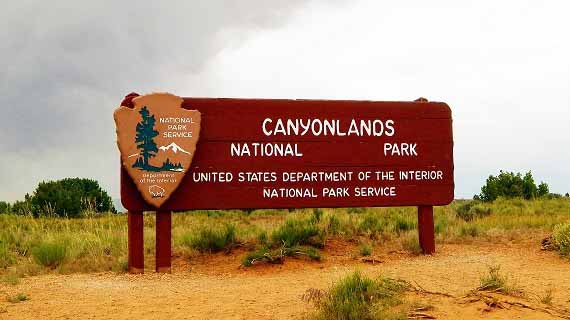 Canyonlands National Park
Canyonlands National ParkUtah
Preserves 527 square miles of colorful landscape that has eroded into countless canyons, mesas, arches and buttes by the Colorado River and its tributaries.
Date Of First Visit: 2014 June👨👩👧
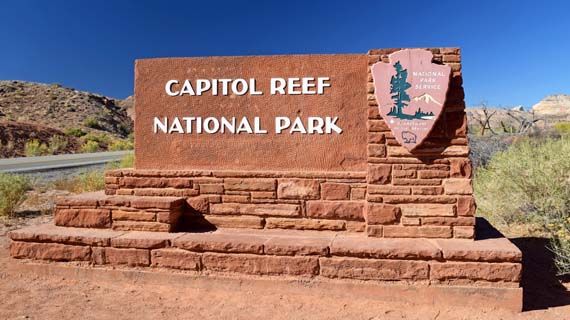 Capitol Reef National Park
Capitol Reef National ParkUtah
A nearly 100-mile long warp in the Earth's crust, a regional fold with one very steep side in an area of otherwise nearly horizontal layers with monoliths and sandstone domes and cliffs.
Date Of First Visit: 2014 April👨👩👧
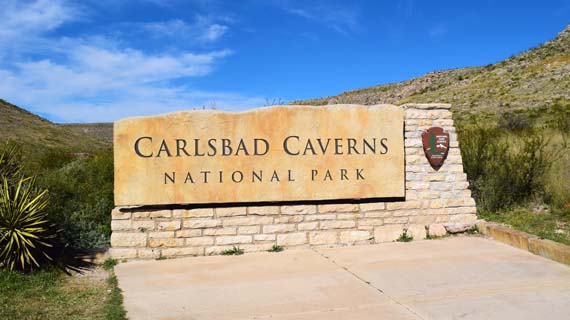 Carlsbad Caverns National Park
Carlsbad Caverns National ParkNew Mexico
117 caves, the longest of which is over 120 miles long. The Big Room is almost 4,000 feet long, and the caves are home to over 400,000 Mexican Free-tailed Bats and sixteen other species.
Date Of First Visit: 2016 November👨👩
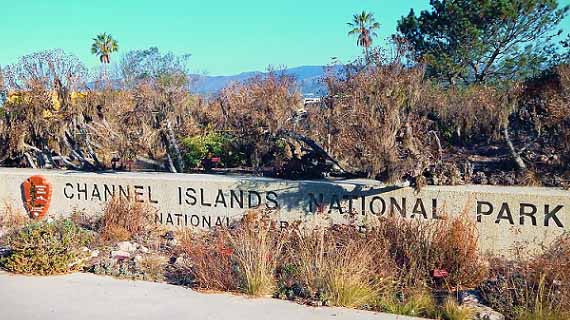 Channel Islands National Park
Channel Islands National ParkCalifornia
Half of the park's area is underwater with a unique Mediterranean ecosystem, home to over 2,000 species of land plants and animals, with 145 unique to the islands.
Date Of First Visit: 2015 September👨👩
 Congaree National Park
Congaree National ParkSouth Carolina
The largest portion of old-growth floodplain forest left in North America. Some of the trees are the tallest in the Eastern US, and the Boardwalk Loop is an elevated walkway through the swamp.
Date Of First Visit: 2016 April👨👩
 Crater Lake National Park
Crater Lake National ParkOregon
Crater Lake lies in the caldera of Mount Mazama formed 7,700 years ago after an eruption. It is the deepest lake in the United States and is known for its blue color and water clarity.
Date Of First Visit: 2017 August👨👩
 Cuyahoga Valley National Park
Cuyahoga Valley National ParkOhio
Waterfalls, hills, trails, and displays about early rural living as well as numerous historic homes, bridges, structures, and a scenic train ride.
Date Of First Visit: 2017 October👨👩
 Death Valley National Park
Death Valley National ParkCalifornia / Nevada
Death Valley is the hottest, lowest, and driest place in the United States. There are canyons, badlands, sand dunes, mountains, and over 1,000 species of plants.
Date Of First Visit: 2015 May👨👩👧👦
 Denali National Park and Preserve
Denali National Park and PreserveAlaska
Centered around Mount McKinley, the tallest mountain in North America, Denali is serviced by a single road. Wildlife includes grizzly bears, Dall sheep, caribou, and gray wolves.
Date Of First Visit: Not Yet Visited
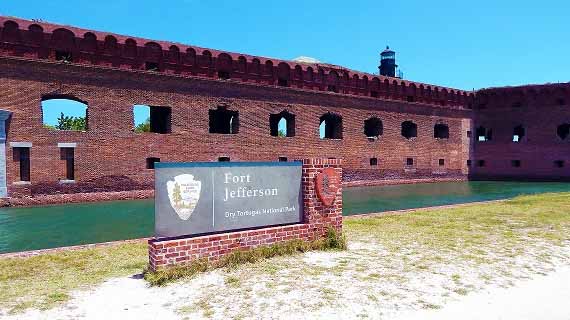 Dry Tortugas National Park
Dry Tortugas National ParkFlorida
70 Miles West of the Keys, home of Fort Jefferson (the largest masonry structure in the Western Hemisphere), coral reefs, and shipwrecks. Only accessible by seaplane or boat.
Date Of First Visit: 2014 May👨👩
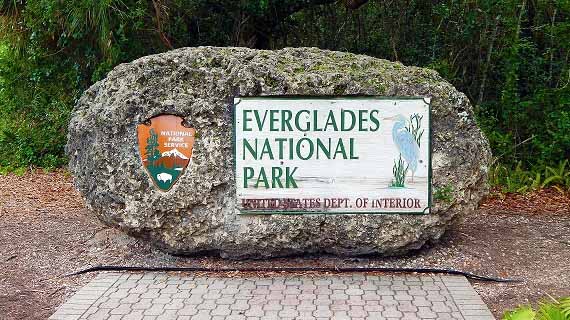 Everglades National Park
Everglades National ParkFlorida
Over 1.5 million acres of tropical and subtropical habitat with one of the world's most diverse ecosystems. Home to 36 protected species.
Date Of First Visit: 2014 May👨👩
 Gates of the Arctic National Park and Preserve
Gates of the Arctic National Park and PreserveAlaska
This northernmost park protects part of the Brooks Range and has no park facilities. The land is home to Alaska natives, who have relied on the land and caribou for 11,000 years.
Date Of First Visit: Not Yet Visited
 Gateway Arch National Park
Gateway Arch National ParkMissouri
The Gateway Arch reflects St. Louis' role in the Westward Expansion of the United States. The park is a memorial to Jefferson's role in opening the West to the pioneers who helped shape its history.
Date Of First Visit: 2011 July👨👩
 Glacier Bay National Park and Preserve
Glacier Bay National Park and PreserveAlaska
Glacier Bay has numerous tidewater glaciers, mountains, and fjords. The temperate rainforest and the bay are home to grizzly bears, mountain goats, whales, seals, and eagles.
Date Of First Visit: Not Yet Visited
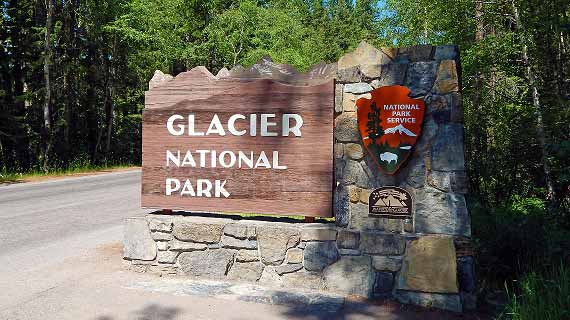 Glacier National Park
Glacier National ParkMontana
Part of Waterton Glacier International Peace Park, this park has 26 remaining glaciers, 130 named lakes, and a landmark road, all under the tall Rocky Mountain peaks.
Date Of First Visit: 2015 June👨👩
 Grand Canyon National Park
Grand Canyon National ParkArizona
Carved out by the Colorado River, the canyon is 277 miles long, up to 1 mile deep, and up to 15 miles wide. The park encompasses canyons, river tributaries, and surrounding grounds.
Date Of First Visit: 2012 June👨👩👧
 Grand Teton National Park
Grand Teton National ParkWyoming
Grand Teton is the tallest mountain in the Teton Range. The park's valley and reflective piedmont lakes contrast with the tall mountains, which abruptly rise from the glacial valley.
Date Of First Visit: 2015 June👨👩👧
 Great Basin National Park
Great Basin National ParkNevada
Based around Wheeler Peak, the Great Basin has 5,000-year-old bristlecone pines, glacial moraines, and the limestone Lehman Caves. It has some of the country's darkest night skies.
Date Of First Visit: 2014 July👨👩👧👦
 Great Sand Dunes National Park and Preserve
Great Sand Dunes National Park and PreserveColorado
The tallest dunes in North America are up to 750 feet tall and neighbor grasslands, shrublands, and wetlands. They were formed by sand deposits of the Rio Grande on the San Luis Valley.
Date Of First Visit: 2016 April👨👩👧
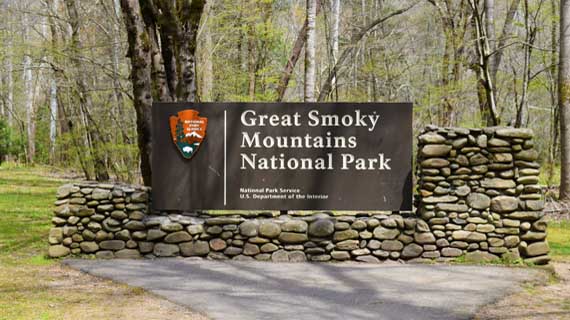 Great Smoky Mountains National Park
Great Smoky Mountains National ParkNorth Carolina / Tennessee
Home to over 400 vertebrate species, 100 tree species, and 5000 plant species. Hiking is the park's main attraction, with over 800 miles of trails, including 70 miles of the Appalachian Trail.
Date Of First Visit: 2016 April👨👩
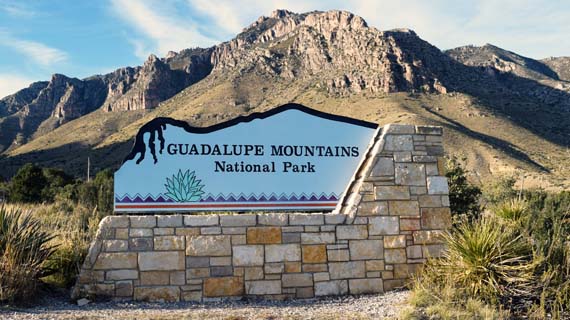 Guadalupe Mountains National Park
Guadalupe Mountains National ParkTexas
This park has Guadalupe Peak, the highest point in Texas, the scenic McKittrick Canyon full of Bigtooth Maples, part of the Chihuahuan Desert, and a fossilized reef from the Permian.
Date Of First Visit: 2016 November👨👩
 Haleakala National Park
Haleakala National ParkHawaii
The Haleakala volcano on Maui has a large crater with many cinder cones. This National Park has the greatest number of endangered species.
Date Of First Visit: Not Yet Visited
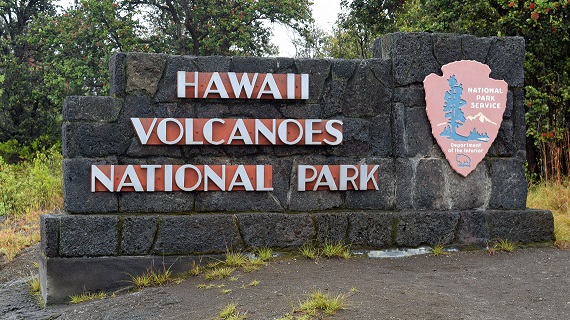 Hawaii Volcanoes National Park
Hawaii Volcanoes National ParkHawaii
This park on the Big Island protects the Kilauea and Mauna Loa volcanoes, two of the world's most active. Diverse ecosystems of the park range from those at sea level to 13,000 feet.
Date Of First Visit: 2017 April👨👩
 Hot Springs National Park
Hot Springs National ParkArkansas
The only National Park in an urban area, based around the natural hot springs that have been managed for public use. Bathhouse Row preserves 47 of these with many beneficial minerals.
Date Of First Visit: 2017 February👨👩
 Indiana Dunes National Park
Indiana Dunes National ParkIndiana
The lakeshore runs for nearly 25 miles along the southern shore of Lake Michigan. The park contains approximately 15,000 acres.
Date Of First Visit: 2015 October👨👩
 Isle Royale National Park
Isle Royale National ParkMichigan
The largest island in Lake Superior, it has many shipwrecks, waterways, and hiking trails. The park also includes over 400 smaller islands in the waters up to 4.5 miles from the island.
Date Of First Visit: Not Yet Visited
 Joshua Tree National Park
Joshua Tree National ParkCalifornia
Covering parts of the Colorado and Mojave Deserts this is the home of the Joshua tree. Across great elevation changes are sand dunes, dry lakes, rugged mountains, and granite monoliths.
Date Of First Visit: 2015 September👨👩
 Katmai National Park and Preserve
Katmai National Park and PreserveAlaska
This park on the Alaska Peninsula protects an ash flow formed by the 1912 eruption of Novarupta, as well as Mount Katmai. Over 2,000 brown bears come here to catch spawning salmon.
Date Of First Visit: Not Yet Visited
 Kenai Fjords National Park
Kenai Fjords National ParkAlaska
Near Seward on the Kenai Peninsula, this park protects the Harding Icefield and at least 38 glaciers and fjords stemming from it. The only area accessible to the public by road is Exit Glacier.
Date Of First Visit: 2018 May👨👩
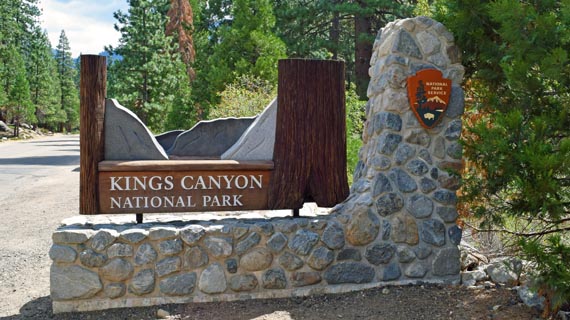 Kings Canyon National Park
Kings Canyon National ParkCalifornia
Home to several Giant sequoia groves and the world's second largest. This park also has part of the Kings River, site of the granite Kings Canyon, and San Joaquin River, as well as the Boyden Cave.
Date Of First Visit: 2017 August👨👩
 Kobuk Valley National Park
Kobuk Valley National ParkAlaska
Three regions of sand dunes can reach 100 feet high and 100 degrees, and they are the largest in the arctic. Twice a year, half a million caribou migrate through the dunes.
Date Of First Visit: Not Yet Visited
 Lake Clark National Park and Preserve
Lake Clark National Park and PreserveAlaska
The region around Lake Clark has four active volcanoes, including Mount Redoubt, rivers, glaciers, and waterfalls. There are temperate rainforests, a tundra plateau, and three mountain ranges.
Date Of First Visit: Not Yet Visited
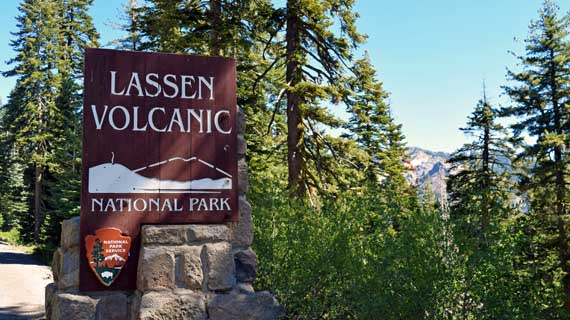 Lassen Volcanic National Park
Lassen Volcanic National ParkCalifornia
Lassen Peak, the largest plug dome volcano in the world, is joined by all three other types of volcanoes in this park: shield, cinder dome, and composite.
Date Of First Visit: 2016 July👨👩
 Mammoth Cave National Park
Mammoth Cave National ParkKentucky
With 392 miles of passageways mapped, Mammoth Cave is by far the world's longest cave system. Cave animals include eight bat species, cave shrimp, cavefish, and cave salamanders.
Date Of First Visit: 2018 May👨👩
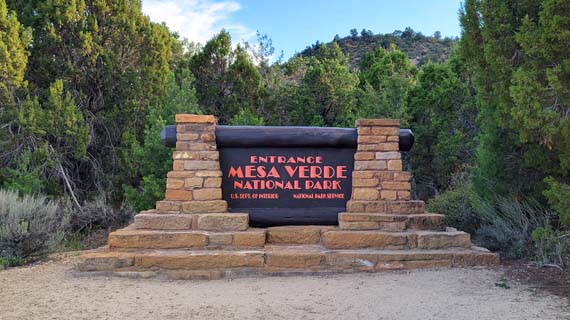 Mesa Verde National Park
Mesa Verde National ParkColorado
This area has over 4,000 archaeological sites of the Ancestral Pueblo, who lived here for 700 years. The cliff dwellings, built in the 12th and 13th centuries, include Cliff Palace.
Date Of First Visit: 2015 May👨👩👧
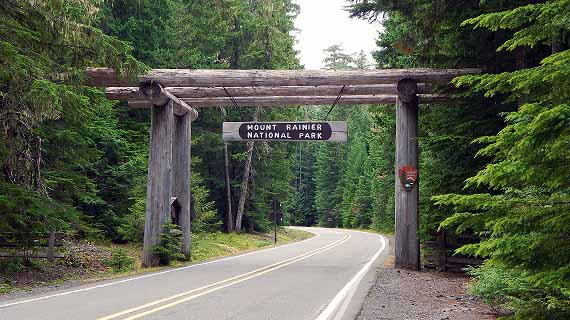 Mount Rainier National Park
Mount Rainier National ParkWashington
An active volcano, Mount Rainier is the most prominent peak in the Cascades. Covered by 26 named glaciers, it is the largest in the continental United States.
Date Of First Visit: 2015 July👨👩
 National Park of American Samoa
National Park of American SamoaAmerican Samoa
Located on three separate islands ringed with rugged cliffs, glistening beaches, and biologically rich coral reefs. Home to unique animals including fruit bats, sea turtles, and an array of birds and fish.
Date Of First Visit: Not Yet Visited
 New River Gorge National Park and Preserve
New River Gorge National Park and PreserveWest Virginia
A rugged, whitewater river flowing northward through deep canyons, the New River is among the oldest rivers on the continent.
Date Of First Visit: 2018 May👨👩
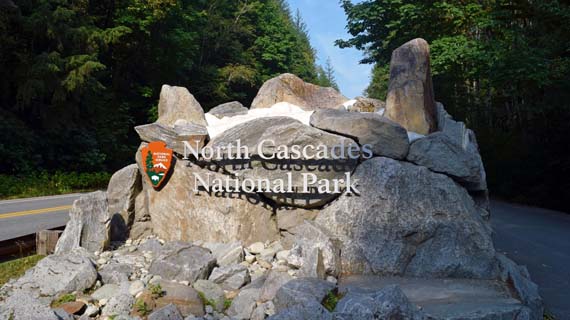 North Cascades National Park
North Cascades National ParkWashington
This complex includes numerous glaciers, with popular hiking and climbing areas including Cascade Pass, Mount Shuksan, Mount Triumph, and Eldorado Peak.
Date Of First Visit: 2017 September👨👩
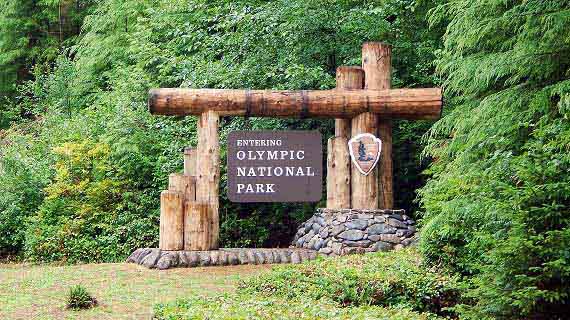 Olympic National Park
Olympic National ParkWashington
This park ranges from Pacific shoreline with tide pools, to temperate rainforests, to Mount Olympus. The Hoh and Quinault Rain Forests are the wettest areas of the continental United States.
Date Of First Visit: 2015 July👨👩
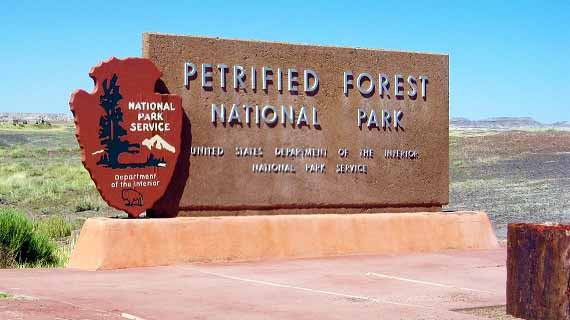 Petrified Forest National Park
Petrified Forest National ParkArizona
Contains one of the world's largest and most colorful concentrations of petrified wood, multi-hued badlands, portions of the Painted Desert, archeological sites, and 225 million year old fossils.
Date Of First Visit: 2012 June👨👩
 Pinnacles National Park
Pinnacles National ParkCalifornia
Spectacular remains of an ancient volcano with massive monoliths, spires, sheer-walled canyons and talus passages define millions of years of erosion, faulting and tectonic plate movement.
Date Of First Visit: 2015 January👨👩
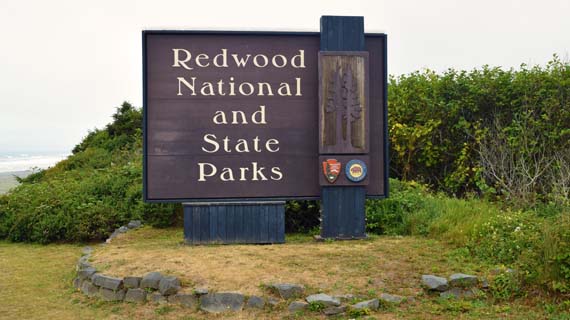 Redwood National Park
Redwood National ParkCalifornia
Protects almost half of all remaining Coastal Redwoods, the tallest trees on Earth. There are three large river systems, coastal tide pools and seastacks, and prairie.
Date Of First Visit: 2017 August👨👩
 Rocky Mountain National Park
Rocky Mountain National ParkColorado
Varying in elevation from the over 150 lakes to forests to the alpine tundra. Large wildlife including mule deer, bighorn sheep, black bears, and cougars inhabit these mountains.
Date Of First Visit: 2015 August👨👩👧
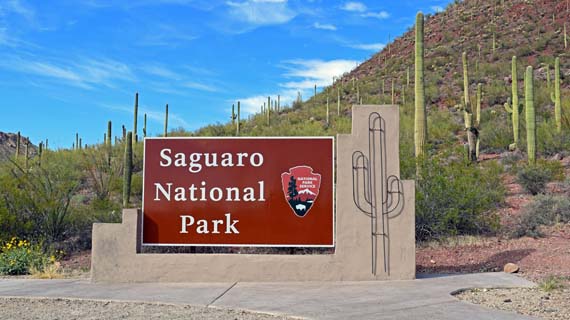 Saguaro National Park
Saguaro National ParkArizona
Protects some of the most impressive forests of Giant Saguaro cactus, which can live for 200 years and grow to 50 feet tall. There are two units to this park.
Date Of First Visit: 2014 February👨👩
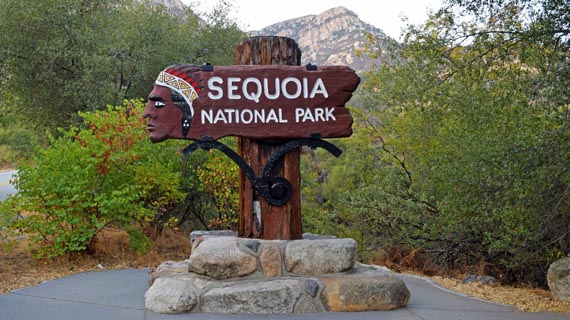 Sequoia National Park
Sequoia National ParkCalifornia
This park protects the Giant Forest, which has the world's largest tree, as well as four of the next nine. It also has over 240 caves and the tallest mountain in the continental U.S.
Date Of First Visit: 2017 August👨👩
 Shenandoah National Park
Shenandoah National ParkVirginia
Shenandoah's Blue Ridge Mountains are covered by forests, home to tens of thousands of animals. The park has more than 500 miles of trails with scenic overlooks and waterfalls.
Date Of First Visit: 2018 May👨👩
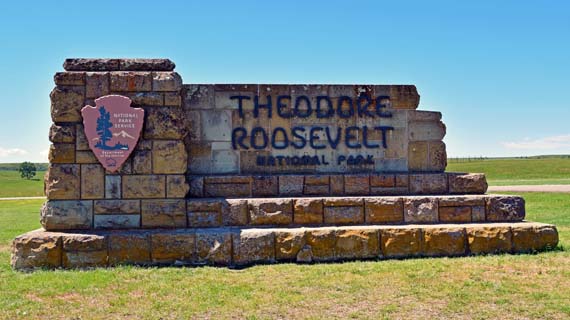 Theodore Roosevelt National Park
Theodore Roosevelt National ParkNorth Dakota
Besides Roosevelt's historic cabin, there are scenic drives and backcountry hiking opportunities. Wildlife includes American Bison, pronghorns, Bighorn sheep, and wild horses.
Date Of First Visit: 2018 July👨👩
 Virgin Islands National Park
Virgin Islands National ParkU.S. Virgin Islands
There are Taino archaeological sites and ruins of sugar plantations from Columbus's time. Past the pristine beaches are mangroves, seagrass beds, coral reefs and algal plains.
Date Of First Visit: 2019 February👨👩
 Voyageurs National Park
Voyageurs National ParkMinnesota
This park on four main lakes, a site for canoeing, kayaking, and fishing, formed by glaciers, this region has tall bluffs, rock gardens, islands and bays, and historic buildings.
Date Of First Visit: Not Yet Visited
 White Sands National Park
White Sands National ParkNew Mexico
Consists of the southern part of 275 square miles of white sand dunes composed of gypsum crystals. Within the White Sands Missile Range and is subject to closure when tests are conducted.
Date Of First Visit: 2016 November👨👩
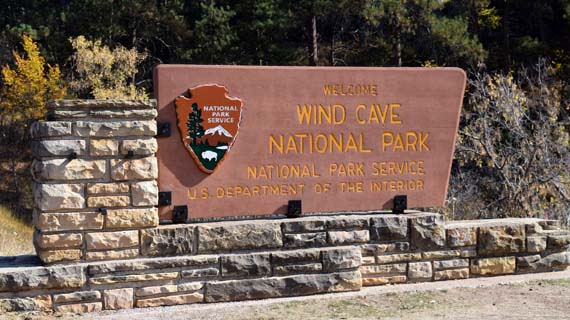 Wind Cave National Park
Wind Cave National ParkSouth Dakota
One of the world's longest and most complex caves and 28,295 acres of mixed-grass prairie, ponderosa pine forest, and associated wildlife are the main features of the park.
Date Of First Visit: 2008 September👨👩👧👦
 Wrangell - St. Elias National Park and Preserve
Wrangell - St. Elias National Park and PreserveAlaska
This mountainous land has the convergence of the Alaska, Chugach, and Wrangell-Saint Elias Ranges, which have many of the continent's tallest mountains, including Mount Saint Elias.
Date Of First Visit: Not Yet Visited
 Yellowstone National Park
Yellowstone National ParkWyoming / Montana / Idaho
The first national park in the world. Contains vast geothermal areas, hot springs, geysers, and four mountain ranges. The Grand Canyon of the Yellowstone River has numerous waterfalls.
Date Of First Visit: 2015 June👨👩👧👦
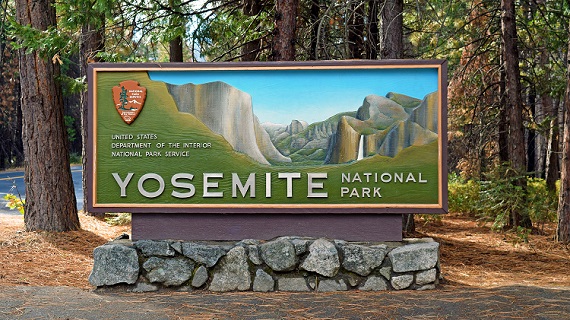 Yosemite National Park
Yosemite National ParkCalifornia
Offers an abundance of activities and sightseeing, including a 7 mile wide canyon, incredible rock formations, the world's tallest granite monolith, and the largest waterfall in North America.
Date Of First Visit: 2016 October👨👩👧👦
 Zion National Park
Zion National ParkUtah
The highlight of the park is an expansive canyon averaging 2,000 feet deep. Zion Canyon offers many hiking opportunities including The Narrows, The Subway, and Angel's Landing.
Date Of First Visit: 2014 June👨👩👧